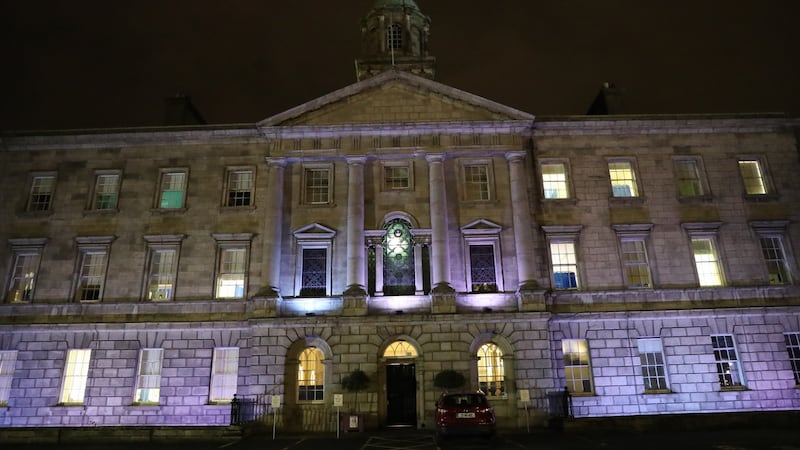Voluntary hospitals have been providing healthcare in Ireland for centuries. They include most of the major teaching hospitals in Dublin: the Mater, St Vincent’s and Tallaght. All three Dublin maternity hospitals as well as St John’s Hospital in Limerick and the Erinville and Mercy hospitals in Cork are voluntary institutions.

They are owned and run by their boards and have service-level agreements with the Health Service Executive. They receive bet ween 70 and 80 per cent of their funding from the State and are expected to raise the remainder themselves. Some voluntary hospitals were traditionally owned and run by religious organisations and would have had a strong religious ethos. This issue has been well ventilated in regard to the move of Holles Street to the St Vincent’s site.
Voluntary hospitals are the location of almost all sub-specialist centres. They organise undergraduate and post-graduate training and set national guidelines and standards. They also house our medical research centres.
As the governance of health has evolved – from health boards to the HSE, to hospital groups, and now Sláintecare – there has never been real clarity as to where the voluntary hospitals sit within these new arrangements. This has created difficult (and sometimes toxic) relationships because of mutual misunderstanding.
The agile and speedy response of the voluntary hospitals was only possible because they have their own boards
HSE chief executive Paul Reid has acknowledged that the organisation and Department of Health “had their socks blown off” by the speed, responsiveness and agility displayed by voluntary hospitals in response to coronavirus and the recent cyberattack on the HSE.
In an interview with this author he said he had not really understood until that point what voluntary hospitals were and why they were different and so important. He reflected that his organisation could not have responded as quickly or as efficiently and he now recognised that in the voluntary hospitals they had a previously unappreciated valuable resource.
The agile and speedy response of the voluntary hospitals was only possible because they have their own boards, which are legally responsible and focused on patient care, outcomes and finance. There are not multiple layers of management and bureaucracy to be navigated when decisions are required and, crucially, there is discretionary funding at their disposal to deal with urgent issues.
This funding accounts for 20 to 30 per cent of voluntary hospital budgets and comes mostly from fees paid by private patients treated by the hospitals. This income supports the sector to the tune of €650 million annually. These funds would need to to be replaced by the public purse if the Sláintecare policy of ending provision of private medicine in publicly funded hospitals were to be implemented.
Furthermore, Sláintecare will take away patient choice as many people will not have local access to private medical facilities if voluntary hospitals withdraw from private medicine. This will drive private patients into the public sector, adding to waiting lists, increasing the workload on an already stretched service. Ultimately, this will create a double hit because the work will be done and the costs incurred, but the income will be lost.
In the maternity setting, Sláintecare takes away choice for women and prevents them accessing private care if this is their choice, and choice is a fundamental pillar of a modern women’s health service.
Sláintecare, if implemented in its current form, will create a huge funding deficit for voluntary hospitals. More importantly, it would remove the sources of their discretionary funds thereby undermining independence and restricting their ability to evolve and respond to a crisis such as Covid-19.

I have grave concerns that developers of the Sláintecare policy may have either misunderstood, or underestimated or ignored, the role of voluntary hospitals in the health system.
The Rotunda, for 277 years, has led the development of services to women and their families. It has been able to do so because it is a voluntary organisation with a culture of quality improvement, an environment that encourages change, and the ability to make the decisions needed to facilitate these objectives.
This independence, coupled with the board’s access to discretionary funding, allow it to implement improvements. If the biggest provider of women’s health services in the country has to go “cap in hand” to the HSE to seek permission to respond to every need or crisis, then I worry about the future.
What is required for a vibrant health sector is for voluntary hospitals to flourish
A conversation is needed in the wake of Covid-19 and after the HSE cyberattack about what we want our health service to look like in years to come and how that might be achieved. In my view, in order to protect the future of our health service we must protect the voluntary sector. Sláintecare is good, but it could be better.
What is required for a vibrant health sector is for voluntary hospitals to flourish and become trusted partners in the system. There is much to learn from the voluntary model and there are aspects that might be applied to other areas of health. The overly bureaucratic command and control model of HSE oversight has not worked well and needs to evolve.
I will leave the last word to Reid as he reflected on the last two years: “Maybe we need to give them [the voluntary hospitals] the means to get on and do what they do well and not try control them quite so much.”
However, when I asked him how this might be achieved, he replied: “Yes . . . ah that’s a good question."











